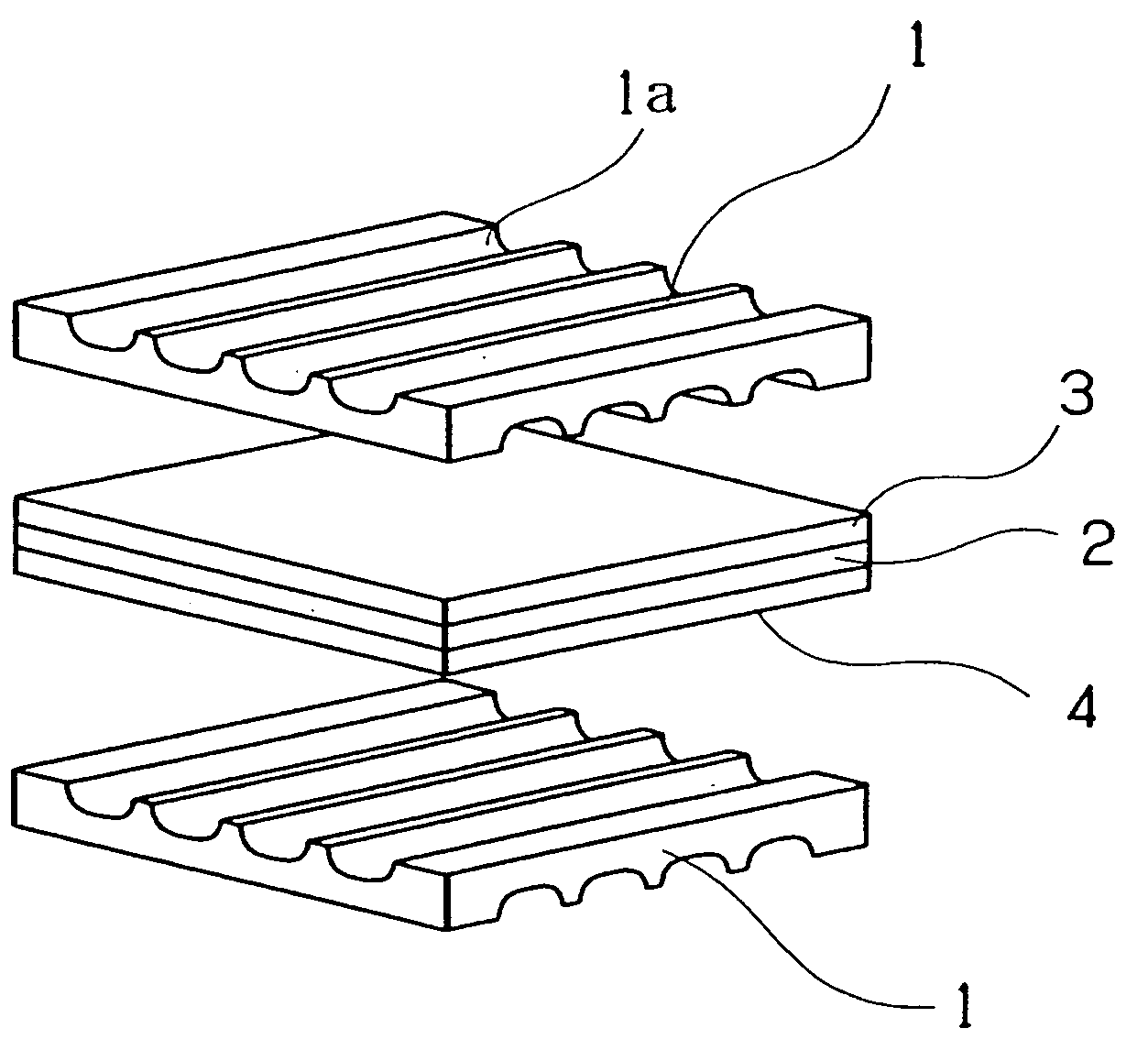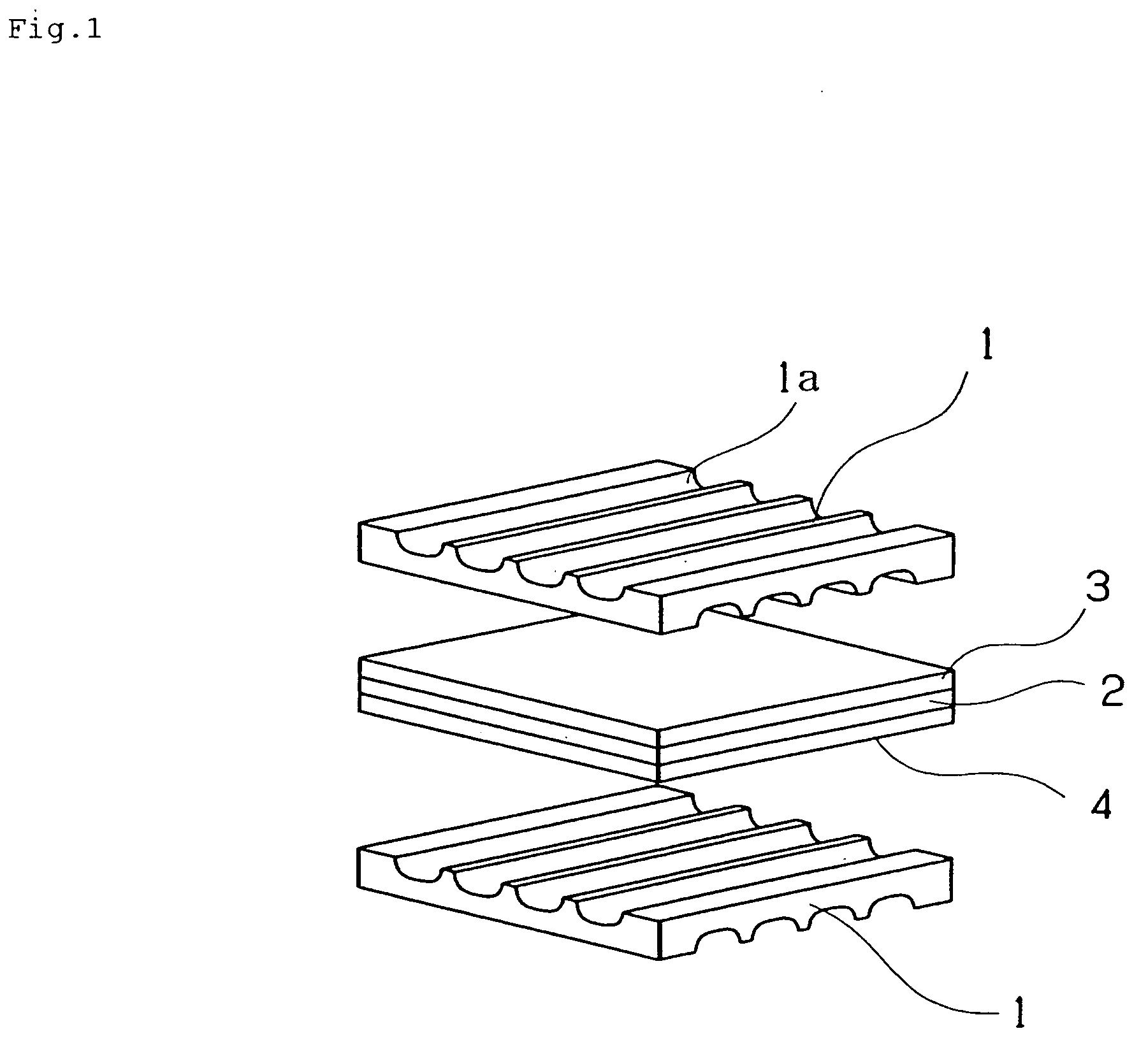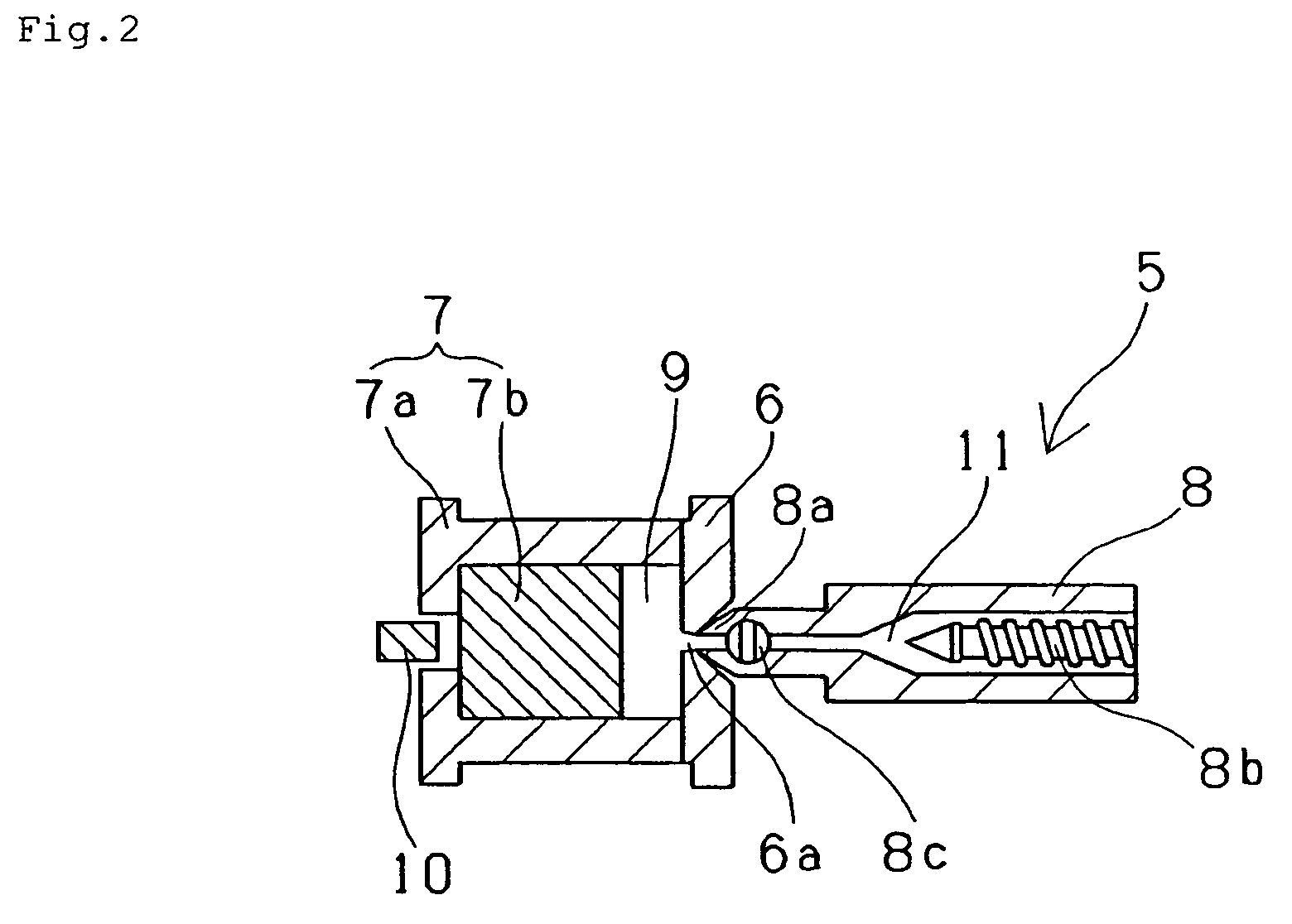Conductive resin molding
a technology of conductive resin and resin composition, which is applied in the direction of sustainable manufacturing/processing, final product manufacturing, electrochemical generators, etc., can solve the problems of resin composition melting viscosity rise, mechanical strength, and insufficient conductivity of resin materials, and achieve excellent injection moldability and dimensional accuracy, and the effect of easy production of conductive resin molding
- Summary
- Abstract
- Description
- Claims
- Application Information
AI Technical Summary
Benefits of technology
Problems solved by technology
Method used
Image
Examples
examples 1 through 5
[0085] In the examples 1 through 5, the first conductive resin molding is used as the separator for use in the fuel cell. At the compounding ratios (unit:vol %) shown in table 1, the synthetic resin, the compounding agent, and the high-boiling-point oils were mixed with one other and kneaded by using a Henschel mixer and a biaxial kneader to pellet the resin composition. As the synthetic resin used as the matrix of the resin composition, J-6083HP (thermoplastic polypropylene resin) produced by Idemitsu Sekiyu Kagaku Inc. was used. As the conductive compounding agent A (indicated as conductive agent A in tables) used as one compounding agent, artificial graphite KS44 produced by LONZA Inc. was used. As the conductive compounding agent B (indicated as conductive agent B in tables) used as another compounding agent, Donacarbo S-210 produced by Dainippon Inc. was used. Of the high-boiling-point oils, as the fluorine-containing oil, FOMBLIN YR produced by AUSIMONT Inc. was used. As the p...
examples 6 through 13
[0098] In the examples 6 through 13, the second and third conductive resin moldings are used as the separator for use in the fuel cell. At the compounding ratios (unit:vol %) shown in table 3, the synthetic resin, the expanded graphite, and other components were mixed with one other by using a Henschel mixer, and the mixture was pelletized by using a biaxial kneader. As the synthetic resin, PP J-6083HP produced by Idemitsu Sekiyu Kagaku Inc. and Zarek S104 produced by Idemitsu Sekiyu Kagaku Inc. were used. As the compounding agents, KEX produced by Nippon Kokuen Inc., EP which is expanded graphite produced by Nippon Kokuen Inc., conductive carbon black#3030B produced by Mitsubishi Kagaku Inc., and EC-DJ600 (conductive carbon black) produced by Lion Akuzo Inc. were used. The mixing ratio of each compounding agent was determined by computing the true specific gravity thereof at the compounding time. The KEX produced by Nippon Kokuen Inc. contained iron, aluminum, sodium, magnesium, an...
examples 14 and 15
[0113] In the examples 14 and 15, the fourth conductive resin molding is formed as the separator for use in the fuel cell. The synthetic resin consisting of 25 vol % of J-6083HP (thermoplastic polypropylene resin) produced by Idemitsu Sekiyu Kagaku Inc. and 75 vol % of KS44 which is artificial graphite produced by LONZA Inc. were mixed with each other by using a Henschel mixer to form a resin composition to be molded. The mixture of the J-6083HP and the KS44 may be pelletized by fusing and kneading it with a biaxial kneader or a kneader.
[0114] By using a flash flow compression molder having the closing valve at its nozzle, the separator for use in the fuel cell was manufactured by setting a shearing speed to 5×103 / s (example 14) and 5×104 / s (example 15). The temperature of the resin composition of the injection cylinder was set to 240° C. The temperature of the die was set to 120° C. The thickness and length of one side of the separator-shaped die and the depth of the gas duct of t...
PUM
| Property | Measurement | Unit |
|---|---|---|
| Fraction | aaaaa | aaaaa |
| Fraction | aaaaa | aaaaa |
| Fraction | aaaaa | aaaaa |
Abstract
Description
Claims
Application Information
 Login to view more
Login to view more - R&D Engineer
- R&D Manager
- IP Professional
- Industry Leading Data Capabilities
- Powerful AI technology
- Patent DNA Extraction
Browse by: Latest US Patents, China's latest patents, Technical Efficacy Thesaurus, Application Domain, Technology Topic.
© 2024 PatSnap. All rights reserved.Legal|Privacy policy|Modern Slavery Act Transparency Statement|Sitemap



